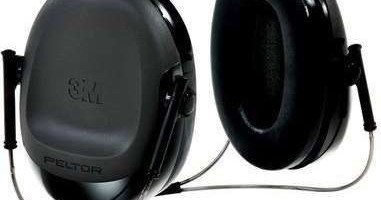How to Choose the Right Hearing Protection for the Job

Posted: 20th July 2020
The effects that prolonged exposure to noise can have on hearing include hearing loss, tinnitus and deafness. If you need to protect your employees' hearing with PPE, then you need to choose the right hearing protection for the job. Thanks to its noise reducing properties, hearing protection reduces the harmful effects that noise can have on the hearing.
According to the HSE:
Hearing protection should be issued to employees:
- where extra protection is needed above what has been achieved using noise control
- as a short-term measure while other methods of controlling noise are being developed
You should not use hearing protection as an alternative to controlling noise by technical and organisational means.
As an employer, you should first be looking at:
- using quieter equipment or a different, quieter process
- engineering/technical changes to reduce the noise at source
- using screens, barriers, enclosures or absorbent materials
- laying out of the workplace to create quiet workstations
- improved ways of working to reduce noise levels
- limiting the time spent in noisy areas
The law requires employers to:
- provide your employees with hearing protectors if they ask for it and their noise exposure is between the lower and upper exposure action values
- provide your employees with hearing protectors and make sure they use them properly when their noise exposure exceeds the upper exposure action values
- identify hearing protection zones, which are areas where the use of hearing protection is compulsory, and mark them with signs if possible
- provide your employees with training and information on how to use and care for the hearing protectors
- and to ensure that the hearing protectors are properly used and maintained
There are some things that you can do to ensure that the hearing protection is being used effectively. This includes:
- making sure the protectors give enough protection - aim at least to get below 85 dB at the ear
- target the use of protectors to the noisy tasks and jobs in a working day
- select protectors which are suitable for the working environment - consider how comfortable and hygienic they are
- think about how they will be worn with other protective equipment (eg hard hats, dust masks and eye protection)
- provide a range of protectors so that employees can choose ones which suit them.
You can find more help and advice from the HSE here.
Back to blog
